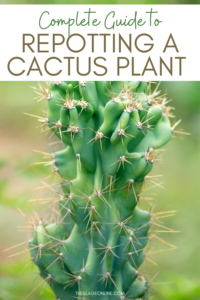Spiders in Cactus Plants: How to Identify and Get Rid of Spider Mites
There exists a world teeming with life on the surface of your beloved cactus plants, a microscopic realm where spider mites thrive. These minuscule arachnids are not true spiders, but their presence can wreak havoc on your cherished succulents. Understanding the nuances of spider mites and how to effectively manage their populations can transform your gardening experience from despair to triumph.
Identifying the Aesthetic Assault: Signs of Spider Mite Infestation
First and foremost, recognition is key. Often, spider mites elude immediate detection due to their diminutive size, usually ranging from 0.5 to 1.0 millimeters. One of the most conspicuous indicators of their presence is the appearance of fine, silk-like webs that cloak the foliage. These webs may initially appear as a mere aesthetic addition to the plant, but they signal the onset of a troubling infestation.
Further clues emerge in the form of speckled surfaces. Check the underside of leaves and stems; if you notice yellow stippling or small white spots, spider mites may be at work. As they feed on plant sap, the foliage can become weakened, leading to a lackluster appearance. In severe cases, plants subjected to extensive feeding may experience leaf drop and stunted growth, sending your cactus into a downward spiral.
Intriguingly, under the right conditions, these pests can multiply exponentially. A female spider mite can lay up to 20 eggs per day, and within a week, those eggs can hatch, giving rise to a new generation that perpetuates the cycle. Understanding their reproductive strategies is crucial to grasping the urgency of immediate action.
Understanding the Dichotomy: Type of Spider Mites
While the two-spotted spider mite (Tetranychus urticae) frequently infests cacti, it is essential to understand that various species can pose threats to your plants. The two-spotted variety is characterized by its body adorned with two distinct dark spots on either side, making it identifiable under scrutiny.
Conversely, the carmine spider mite (Tetranychus cinnabarinus) possesses a more vibrant coloration, manifesting as reddish-brown when under stress due to environmental factors. This color shift indicates that the mite is feeding ravenously and, as such, it is crucial to be vigilant in monitoring your cactus plants, particularly during warm weather when spider mite populations surge.
The Citrus Red Mite (Panonychus citri) is another variant that may show an affinity for cacti, although it primarily targets citrus plants. However, as these mites do not discriminate, they can still invade your cacti and cause detrimental damage. Building a comprehensive understanding of these enemies will aid in developing effective management strategies.
Combatting the Menace: Best Practices to Eradicate Spider Mites
Arming yourself with knowledge is the first step toward effective management. Once you have identified spider mites on your cactus plants, initiate a thorough inspection. Remove any heavily infested areas by pruning if necessary. This reduces the initial population, paving the way for further control strategies.
Washing your plants is a highly effective method to dislodge spider mites and their webs. Using a gentle stream of water, spray the affected areas, aiming particularly at the undersides of leaves and the stems. This mechanical action can dismantle their webs and wash away a significant portion of the adult mites. It is an entirely non-toxic approach and is often favored by those adhering to organic gardening principles.
Should the infestation persist, consider employing insecticidal soaps or horticultural oils. These products adhere to the exoskeleton of spider mites, suffocating them in a matter of hours. Make sure to follow the product instructions meticulously, applying during cooler parts of the day to avoid phytotoxicity in your cacti.
Another highly effective weapon in your arsenal is the introduction of predatory mites. Species such as Phytoseiulus persimilis are known to feast on spider mites, providing a natural form of pest control. Introducing these beneficial insects can significantly reduce the spider mite population over time, especially in severe cases where chemical interventions may be less desirable.
In addition, cultivating an optimal environment can deter spider mites from taking hold. Maintaining adequate humidity and using proper watering techniques can help ensure your cactus plants stay healthy and resilient. Spider mites flourish in dry, hot conditions; thus, creating a balanced microclimate is crucial to prevent their resurgence.
The Bottom Line: A Lifelong Battle with Resilience
Spider mites can perpetuate an arduous struggle for those who cultivate cactus plants, but understanding how to identify and manage these pests effectively can dramatically shift your garden’s trajectory. By employing a combination of vigilant monitoring, mechanical methods, organic treatments, and naturally occurring predators, you can foster a thriving ecosystem within your home or greenhouse.
Embrace this newfound knowledge as you venture forth into the world of cactus care, armed against the invisible enemy that lurks in your plants. Not only will your cacti flourish once more, but you will develop a perspective cemented in resilience, fostering a deeper appreciation for the interdependent relationships at play in the natural world.





Leave a Comment